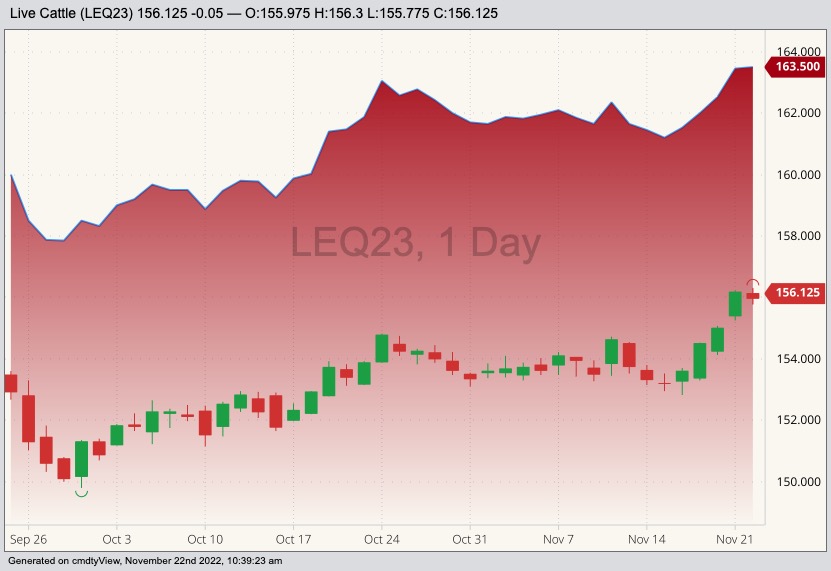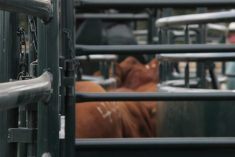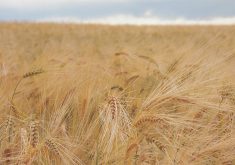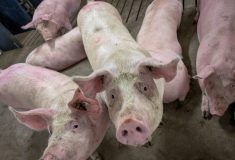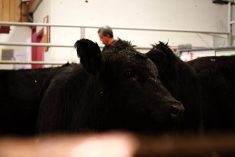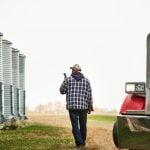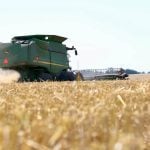Compared to last week, western Canadian calf markets traded $5 lower to as much as $3 higher. Quality groups of heifers weighing 550-700 lbs. were notably $2-$3 higher and this was largely due to lower supplies of steers.
Weather conditions improved in southern Alberta, which was supportive; however, buyers were cautious. Quality pre-conditioned calves held value but off-grade smaller packages were discounted accordingly.
The market was hard to define in some cases due to the wide price range on similar-weight cattle. Over the past few weeks, prices for calves exceeding 550 lbs. have come under pressure as feed grain prices percolate higher. For example, steers weighing 625 lbs. are down $10-$15 from 30 days earlier. As of Friday’s close, CME August 2023 live cattle futures are back up near contract highs of $155. Calves under 550 lbs. appear to have held value over the past month because these cattle have more options. They can be placed on grass next spring and the feeding period can be extended. Notice the December 2023 live cattle futures are above $160. The August/December 2023 live cattle futures spread has been influencing the price structure for calves.
Read Also
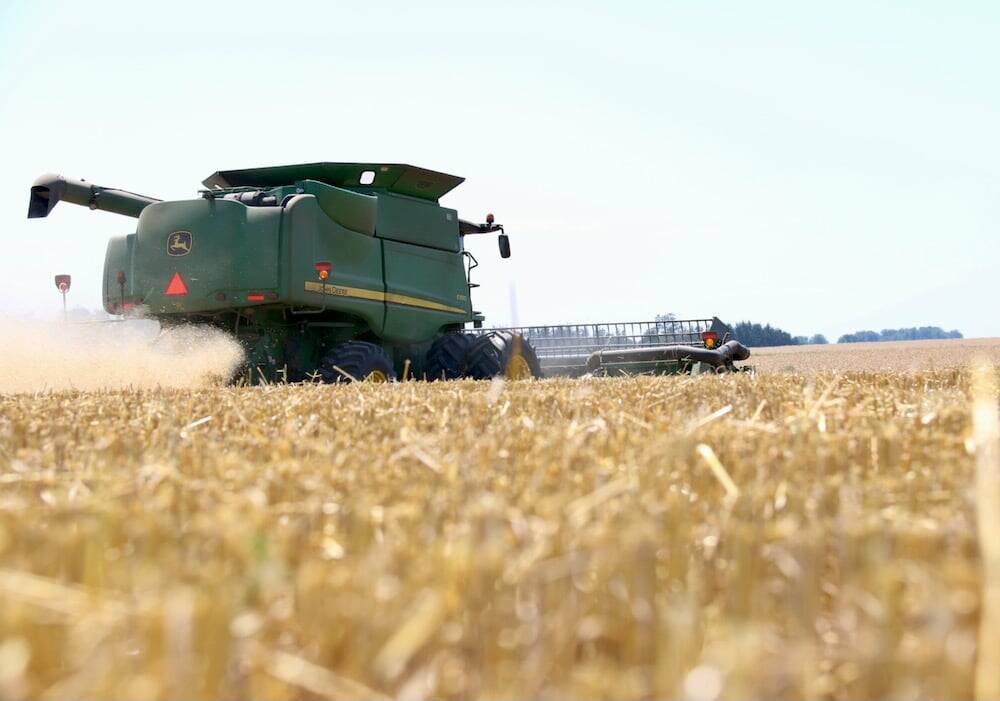
GIWA trims Western Australian crop forecasts, still predicts record harvest
The Grain Industry Association of Western Australia (GIWA) slightly lowered its estimates for the state’s 2025/26 production of wheat, barley and canola on Friday but said the harvest of winter crops was still on track to be the biggest ever.
Yearling supplies are limited. Northeast of Lethbridge, tan steers weighing 910 lbs. on forage diet were quoted at $227. In Manitoba, larger-frame Charolais heifers weighing a shade over 900 lbs. silenced the crowd at $207.
South of Edmonton, a small group of medium- to larger-frame Simmental-blended short-weaned steers with full health records weighing 735 lbs. were valued at $242. Northwest of Winnipeg, a small group of semi-weaned steers with red Angus features averaging 720 lbs. were quoted at $261. Southeast of Saskatoon, black steers on forage diet weighing 705 lbs. were valued at $250.
North of Brandon, red mixed steers weighing 612 lbs. drew attention at $253. In southeastern Saskatchewan, semi-weaned larger-frame black mixed steers weighing 620 lbs. were bid up to $246. West of Edmonton, Angus-blended steers on forage diet weighing 617 lbs. on full health program dropped the gavel at $239.
In central Alberta, tan steers weighing 520 lbs. dropped the gavel at $291; in central Saskatchewan, a larger group of 510-lb. mixed steers were quoted at $295. In Manitoba, larger-frame black steers weighing 512 lbs. were valued at $294. The market was relatively flat across the Prairies for calves under 550 lbs. with quality features dictating the price structure. Top values for 500-lb. steers were around $300 in all three Prairie provinces.
Friday’s Cattle on Feed report from the U.S. Department of Agriculture was considered bullish for the fed and feeder markets. U.S. feeder cattle placements during October were down six per cent from October 2021. Cattle buyers report that the fall run in Western Canada is moving into its final stages and calf supplies will decline moving forward.
— Jerry Klassen is president and founder of Resilient Capital, specializing in proprietary commodity futures trading and market analysis. Jerry consults with feedlots on risk management and writes a weekly cattle market commentary. He can be reached at 204-504-8339 or via his website at ResilCapital.com.

